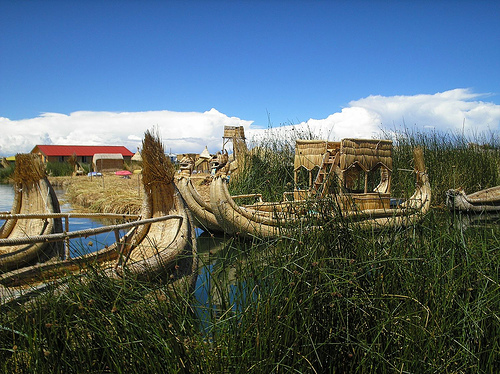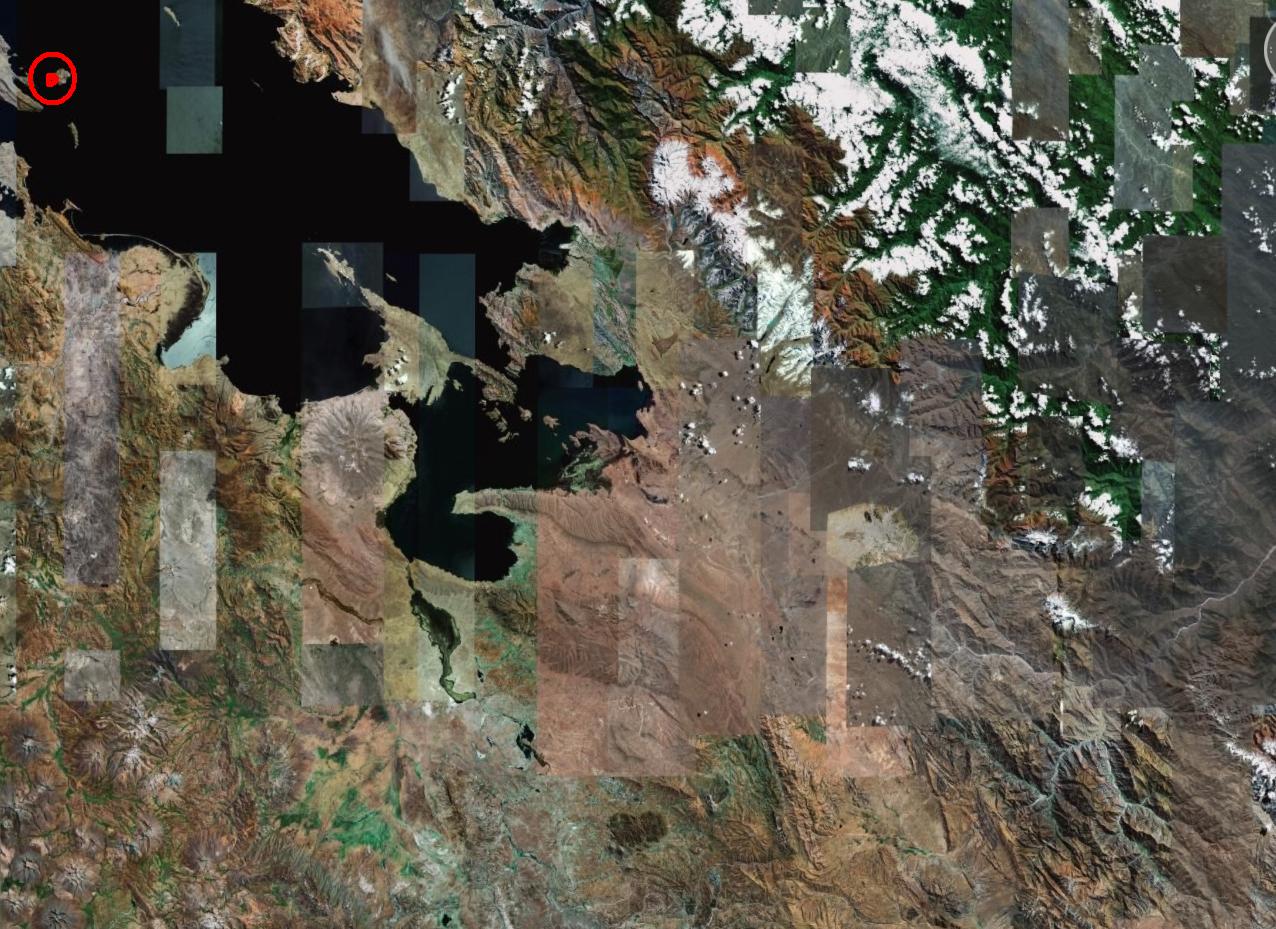TARGET 081217
The Fantastic
Floating Islands of Titicaca
|

|
The Uros people of Lake Titicaca have a unique way of
life - they build their own islands, float them on the
lake and then proceed to live on them. Here is a glimpse
of their world, where their homemade "islands" are
truly "in the stream".
Floating islands? It may sound like something out of a
Jonathan Swift novel, but to the Uros people it is a
fact of every day life. This small tribe of South
American indigenous people retain a great deal of a culture
that goes back millennia and one whose unique
domestic arrangements stem from that age old fear -
the dread of suppression by other, stronger and more
populous peoples.
|

|
If you look closely at the picture above, you will see that
the "ground" out of which the tortora reeds (which grow
along the edges of the islands) appears to be covered with
dead stems. That is because the "ground" out of which the
reeds grow, and on which the huts are located, is actually
not ground at all. It is simply mats of dried
stems, tied together to make the floating islands. Where
do they get the stems? From the weeds which grow on the
edges of the islands.
These reeds are called "tortora reeds", and are almost
waterproof, once they are dried. They have interweaving
roots which create a dense layer up to two meters (a little
over 6 feet) thick on top of which the islands themselves
develop. Anchorage for the island is provided by driving
large logs into the bottom of the lake. Ropes are then
attached to these logs to give the islands stability. If
there is ever a need to move the islands to a safer location,
they simply release the ropes and float away.
however, the reeds slowly rot away and the islanders must
replace them constantly. Each island will go through this
process at least four times a year - more when the rains come.
However, there is reward for all of this hard work as
each island has a lifespan of around thirty years, and
other than the hard work to keep them floating, the rent
is free.
|

|
The tortora reeds themselves are malleable enough to
dry out, bundle and shape in to extraordinary boats which
float quite nicely.
|

|
With a leap of the imagination, the original Uros saw
the possibility for a system of "boats" large enough to
hold an entire village, and which, in case of emergency,
could simply be moved away from the mainland. The also
realized that the houses could also be made of the
same reeds as the island on which they sit.
|

|
The reed islands are meticulously created by hand and are
a continually evolving habitat for the Uros. Although the
reed used for the island is not as painstakingly ‘woven' as
that used for their boats, the construction of the islands
represents an enormous workload for the people of the tribe.
The islands themselves must be several meters thick in
order to support the homes and associated buildings.
|

|
Although the Uros people number in the low thousands, it is
thought that only about five hundred of them still choose
to live in this ancient manner - though with some
concessions to the modern world!
Traditionally there are around forty small islands on
the lake with one - the largest - being the focal
point of the community.
The reed, as well as being - quite literally - the
foundation of the community, is important to the Uros'
economy and well being. Iodine is produced from the
base of the reed and it is also used for general
medicinal purposes. The reeds are wrapped around
parts of the body that are hurting and, purportedly -
cure it of its aches and pains! The flower of the
reed is also used to brew up a very tasty drink!
Like many unique cultures around the world, that of
the Uros is under threat from assimilation. Most of
the Uros speak Aymara - a highly regular language,
which is also the language of a larger local tribe that
remains resolutely mainland. It is thought that the
Uros lost their own language around five hundred
years ago. Whether the language was naturally lost
or Aymara was forced upon them is not known, but the
relatively recent arrival of Europeans has been the
greatest threat to their cultural identity - greater
than that of the Inca Empire - to which the Uros had
to pay taxes and give up many of their own people as
slaves. Many think that it was to escape from the Inca
empire's people that the Uros first began to live on
and escape using their floating islands.
|
Feedback Map

|
Many thanks to Ray McClure for suggesting and programming this target.
|







